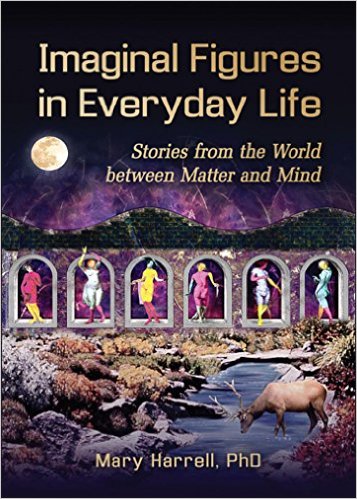

The Imaginary is Becoming More Real
Boundaries are evaporating. Those three words spell my
message regarding the future that is evolving now. The evaporating of boundaries
will have more impact upon our lives than maybe even climate change. I want to
share with you an important new book that I see as part of the growing body of
evidence to support my claim.
An important boundary and distinction we make is between
reality and imagination, between the mental and the physical. Of course,
contemporary metaphysics recognizes that the physical reality has a mental
foundation. The “Integral Perspective,” and Edgar Cayce is an early
representative of that point of view, is that consciousness drives evolution,
not the physical play of survival of the fittest.
What if “imaginary playmates” were real? What then? What
if the figures of our imagination were real? What then? What if these imaginary
characters could make a difference in our lives? What if they could affect
physical reality—in real time, not merely in metaphysical discussions?
One of
my first undergraduates at Princeton University, around 1974-5, Mary Watkins,
produced as her senior thesis what would later become a best seller and even a
required text at Atlantic University—Waking
Dreams. In it, she describes, summarizes
and opines on the implications of a small group of people who were working with
the imagination, especially imaginary beings. At the time, these beings figured
in psychotherapy, although Carl Jung’s own personal work, which we finally got
to see first hand in the publication of his “Red
Book,” hinted at their larger significance.
During the meeting with other faculty members where Mary had to defend her
thesis, the faculty chairman asked Mary if one could actually impact reality
with these imaginary figures. Little did he know that laboratory research was
about to demonstrate that the autonomic nervous system requires the imagination
in order for it to be controlled. Mary’s work stood on the brink of a revolution
in thought.
Some
forty years later, we see how far this revolution has come. In her book,
Imaginal Figures in Everyday Life: Stories from the
World between Mind and Matter (Chiron
Publications), Mary Harrell, Ph.D. tells many stories from her own life to
demonstrate the reality of imaginary helpers. There’s a tradition that goes way
back to the ancient Persians that favors the term imaginal over imaginary. The
“imaginal realm” exists between matter and mind, intermingling with both,
creating a bridge between them, as well as dissolving their boundary that
distinguishes them. We might use the term “thought forms” to express our sense
of creations of the mind having some influence on the physical. In a long term,
large study involving hundreds of participants in workshops I’ve conducted
around the world, I show how such statements as “the tension in the room was so
strong you could cut it with a knife,” are expressions of being in contact with
this intermediate, imaginal realm, neither just physical nor just mental, but a
bit of both. Our feeling imagination is what detects and processes this quality
of “energy,” as some folks like to call it.
What Dr. Harrell has done in her book is tell enough
personal stories to make this somewhat abstract concept of the imaginal very
real and convincing. The “people” she talked to in her imagination had important
things to tell her, could reveal things about her physical reality that she
could verify, and could operate on that reality as well. They are “real” for all
intents and purposes.
Not that there aren’t hallucinations and make believes
within the mind—stuff we can enjoy and let go of or pay no mind to. But there
are also beings in the mind that call for our attention, and reward our paying
them respect. I’ll share one instance I’ve experienced, an example that doesn’t
require a story from psychotherapy to appreciate.
I’m out in the garden, supposedly to weed it. But the day
is warm and I’ve just finished lunch. I’m kinda goofing off and daydreaming.
Suddenly, out of the corner of my eye, I see a little character peeking out from
behind a squash plant. I turn to get a better look as it disappears. As I
reflect upon the experience, I realize that I had “imagined” its reality. By
that I mean that it required my imaginal sight, not my physical eyes, to
perceive it. It’s attitude matched my mood. I could sense a quality of oneness,
similarity, or companionship in the encounter. My mood matched its attitude and
allowed my imagination to experience it in imagery. Several years later, I ran
across a book of drawing by a psychic artist who was portraying the various
plant devas she had encountered. When I came to the squash plant, her painting
depicted exactly what I had “seen.”
Mary Harrell’s book mentions those kinds of critters,
although most of her stories are about human like beings who help her in her
healing and growth.
My only criticism of the book is the physical design. The
publisher used such a small type face you have to really concentrate to keep
your focus, and some of the pages are not printed as firmly, making them even
harder to read. Such effort gets in the way of relaxing into the imaginal realm
so you can enjoy the experiences that Mary describes. It may have been a way to
create a book with fewer pages, but at the cost of our involvement with the
images the words convey. I suggest your getting a digital copy so you can adjust
the font to a size of your liking.